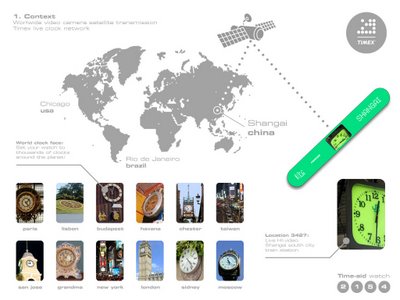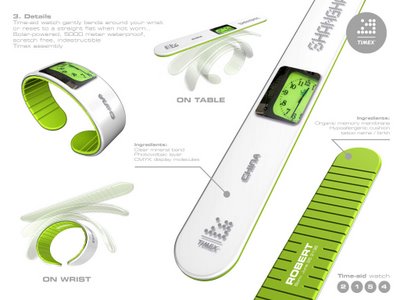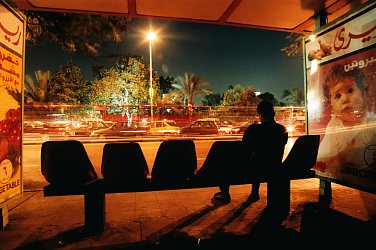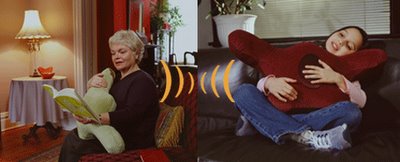If you’re new here, you may want to subscribe to my RSS feed to receive the latest Architectradure’s articles in your reader or via email. Thanks for visiting!
The Time Aid watch by Christophe Koch and Lea Kobeli. They won the Timex 2154 The Future of Time Competition in 2004. The clock changes as the wearer moves from one place to another.
Using a satellite/video interface, Time-aid can be programmed to display any clock face the user chooses, in real time, from a local clock tower to a sundial halfway around the world. This personal object contains advanced technology that, paradoxically, connects the wearer to history and the larger world. New and old, personal and global, Time-aid inspires an awareness of time and space










